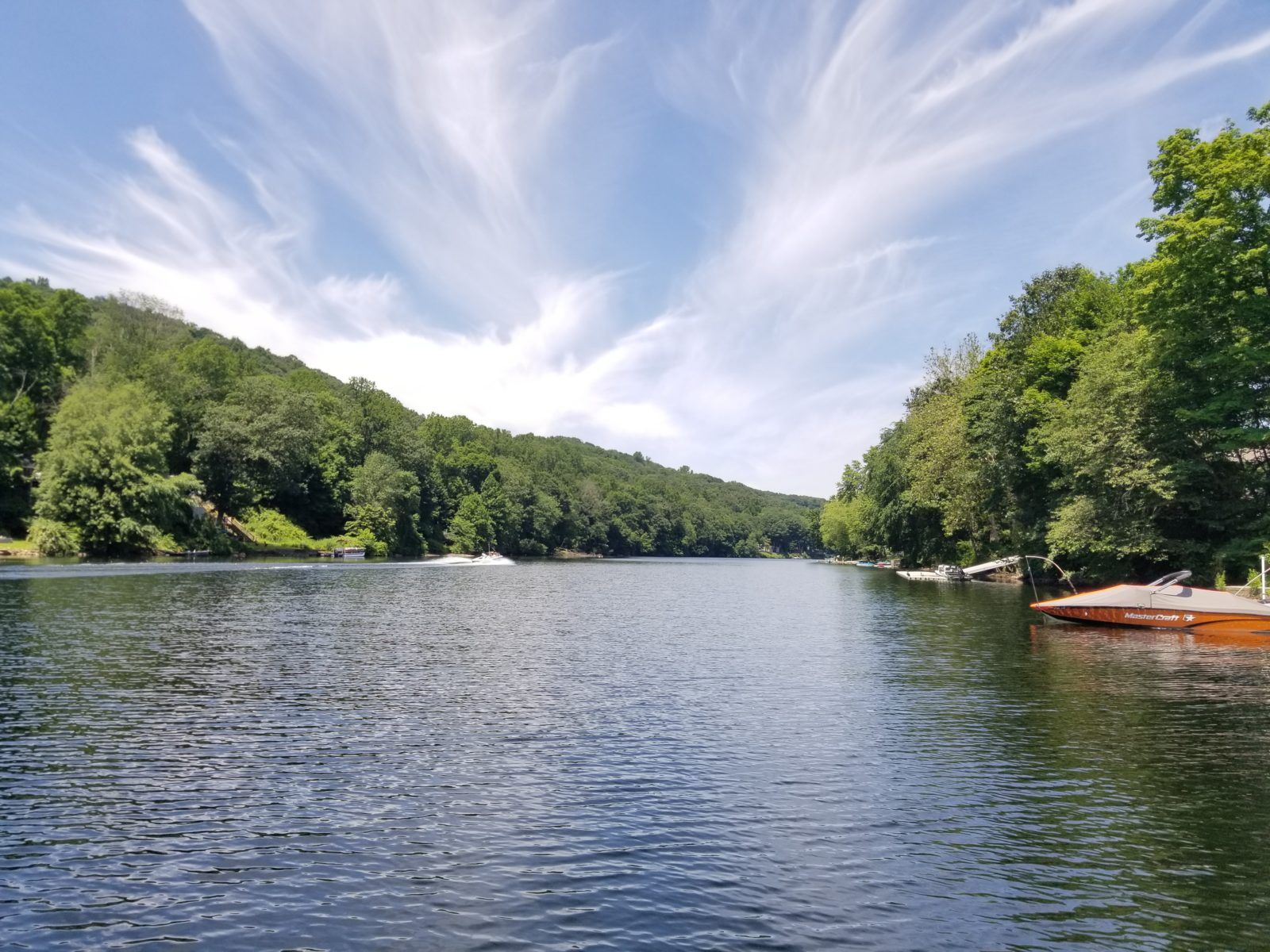Best Management Practices for Spring Green-Up
April 14th, 2015
Written by Industry Expert Trent Nelson, Aquatic Specialist
 You are probably in the process of selecting and implementing fertilizer applications to improve turf health. Unfortunately, fertilizer is often applied incorrectly by both homeowners and unaware professionals. Excessive or improper fertilization, when combined with stormwater runoff, will carry these surplus nutrients away from the target area and deposit them into waterbodies leading to eutrophication. Eutrophication is the enrichment of an aquatic ecosystem through the introduction of excessive nutrients, mainly nitrogen and phosphorus.
You are probably in the process of selecting and implementing fertilizer applications to improve turf health. Unfortunately, fertilizer is often applied incorrectly by both homeowners and unaware professionals. Excessive or improper fertilization, when combined with stormwater runoff, will carry these surplus nutrients away from the target area and deposit them into waterbodies leading to eutrophication. Eutrophication is the enrichment of an aquatic ecosystem through the introduction of excessive nutrients, mainly nitrogen and phosphorus.
Prior to initiating any fertilization program, several questions should be asked, and information obtained about the site’s specific fertilization requirements. It is important to know the type of turf that you will be working with, warm or cool season grass? What type of fertilizer works best with that turf variety? How much fertilizer will be sufficient to meet your needs? Are there impervious areas on the site where fertilizer will concentrate and be carried away if there is a storm? Has soil testing been done to determine the exact amount of N and P required for the site?
Warm season (C4) grasses are predominately found in coastal regions of the southeast. The most common and widely used warm season grass in these regions are Bermudagrass. Warm season grasses will break winter dormancy around late April to early May and generally do not need fertilization until they have begun actively growing. Cool season or C3 grasses are found throughout the southeast and Mid-Atlantic States but prefer to grow in cooler climates north of North Carolina. Cool season grasses remain green year round and will break winter dormancy as soon as nighttime temperatures begin to rise, typically in March and April. Knowing the difference in turf types is critical as it will determine the amount, type, and frequency of the fertilization.
A simple soil test for any turf type is the best way to quantify how much nutrients a stand of turf actually needs. A soil test will also determine which nutrients are already at sufficient levels. This will allow the applicator to select the optimal fertilizer for each application. The rate or amount to be evenly applied over the targeted area should be one of the first data points collected when making sound agronomic decisions.
Fertilizer is characterized by a set of three numbers that indicate the ratio of nitrogen, phosphorous, and potassium. If a soil test determines that a complete analysis fertilizer be applied, then look for a type that has all three numbers equal such as a 17-17-17 fertilizer. If testing indicates the turf is not deficient in all of the three major nutrients, contact a specialized turf product supplier and ask for a fertilizer with an incomplete analysis like 24-0-18, or a similar product that will fit the needs of the turf without being excessive and adding unnecessary quantities that can lead to water quality degradation.
 Most of the soils in our region already have an abundance of phosphorus and any variety of turfgrass growing on these soils typically may not require additional phosphorus at all. Phosphorus will typically bind tightly to soil particles and is not available for uptake by the turfgrass, therefore the excessive and careless application of phosphorus can lead to excess phosphorus levels in runoff that ultimately finds its way into nearby waterbodies. Excess phosphorus is the main culprit in algae blooms occurring in our lakes and ponds that can lead to widespread fish kills.
Most of the soils in our region already have an abundance of phosphorus and any variety of turfgrass growing on these soils typically may not require additional phosphorus at all. Phosphorus will typically bind tightly to soil particles and is not available for uptake by the turfgrass, therefore the excessive and careless application of phosphorus can lead to excess phosphorus levels in runoff that ultimately finds its way into nearby waterbodies. Excess phosphorus is the main culprit in algae blooms occurring in our lakes and ponds that can lead to widespread fish kills.
Therefore, when applying fertilizer, you should always be aware of where the fertilizer can be transported via runoff. If impermeable surfaces like sidewalks and driveways are present, make sure all fertilizer is swept or blown back into the turf areas so that rainfall will be less likely to deposit the nutrients into stormwater drains. If a pond or stream is present on your property, be sure to leave an unfertilized buffer of approximately 10-15 feet around these waterbodies to reduce the chance of runoff carrying these excess nutrients to them, or even worse, having a direct application of fertilizer to the water.
The Agriculture Industry once recommended that residential turf be fertilized infrequently to reduce the amount of nutrients available to be transported to waterbodies. Additional research was conducted by the EPA and now they recommend that turf be fertilized more frequently with lower amounts of specific nutrients. Infrequent fertilization can create poor turf conditions, increasing the amount of possible runoff and erosion. A stand of turf that is thick and healthy with a mature root system will uptake nutrients, filter and slow sheet flow water, as well as decrease the amount of nutrients that can leach into shallow groundwater systems.
Some states and municipalities have even begun requiring training certification to better educate applicators on proper fertilization techniques, and/or how the misapplication of fertilizer adversely impacts water quality. Areas in the Jordan Lake watershed in the piedmont of North Carolina have implemented rules that require applicators to complete nutrient management training, and also require that property owners ensure that for-hire applicators have met current training requirements for nutrient management. These new rules do not require private landowners applying fertilizer to their own property to take these education courses, however it is recommended to better understand the effects of nutrients on surrounding watersheds.
Nutrient loading in waterbodies is a problem across the United States. Although fertilizer is not the sole contributor to watershed pollution, proper fertilization techniques can greatly reduce the amount of nutrients entering our waterbodies. The old adage states that 5 pounds of phosphorus can equate to 500 pounds of wet algae. This is a frightening thought and if ignored can likely lead to irreversible damage to our aquatic ecosystems. Every one of us can make a significant difference and play a necessary role in protecting our water resources.
Contact the experts at 888-480-5253 for all of your lake, pond and fisheries management needs.
Trent Nelson is an Aquatic Specialist with SOLitude Lake Management. Since 1998, SOLitude Lake Management has been committed to providing full service lake and pond management services that improve water quality, preserve natural resources, and reduce our environmental footprint. Services are available throughout the Eastern United States. Fisheries management consulting and aquatic products are available nationwide. Learn more about SOLitude Lake Management and purchase products at www.solitudelakemanagement.com.










